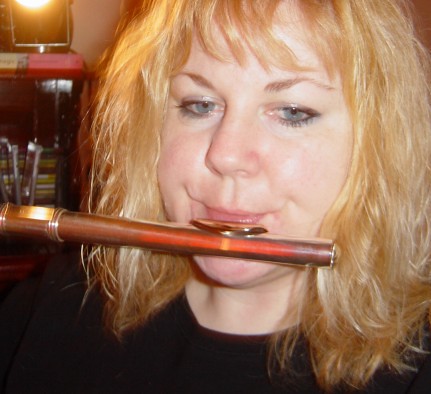Discover the phenomenal complexity of music and reflect on the way it can positively influence your life with this sound collection of riveting quotes...
- "Music, the greatest good that mortals know, And all of heaven we have below." -- Joseph Addison
- "Music was my refuge. I could crawl into the space between the notes and curl my back to loneliness." --Maya Angelou
- "Music is either good or bad, and it's got to be learned. You got to have balance." -- Louis Armstrong
- "Music washes away from the soul the dust of everyday life." -- Berthold Auerbach
- "The aim and final end of all music should be none other than the glory of God and the refreshment of the soul." --Johann Sebastian Bach
- "Music is the mediator between the spiritual and the sensual life." -- Ludwig van Beethoven
- "Music - The one incorporeal entrance into the higher world of knowledge which comprehends mankind but which mankind cannot comprehend." -- Ludwig van Beethoven
- "Music can change the world. " -- Ludwig Van Beethoven
- "Music can name the unnameable and communicate the unknowable." -- Leonard Bernstein
- "Music has to breathe and sweat. You have to play it live. " -- James Brown
- "Music is well said to be the speech of angels." -- Thomas Carlyle
- "All music comes from God." -- Johnny Cash
- "If you learn music, you'll learn most all there is to know. " -- Edgar Cayce
- "Music is nothing separate from me. It is me... You'd have to remove the music surgically. " -- Ray Charles
- "Good music is good no matter what kind of music it is. " -- Miles Davis
- "There is no feeling, except the extremes of fear and grief, that does not find relief in music." -- George Eliot
- "You are the music while the music lasts." --T. S. Eliot
- "We need magic, and bliss, and power, myth, and celebration and religion in our lives, and music is a good way to encapsulate a lot of it. " -- Jerry Garcia
- "Music is the language of the spirit. It opens the secret of life bringing peace, abolishing strife." -- Kahlil Gibran
- "When people hear good music, it makes them homesick for something they never had and never will have." -- Edgar Watson Howe
- "Music expresses that which cannot be said and on which it is impossible to be silent." -- Victor Hugo
- "The history of a people is found in its songs." -- George Jellinek
- "Music is the vernacular of the human soul." -- Geoffrey Latham
- "It requires wisdom to understand wisdom; the music is nothing if the audience is deaf." -- Walter J. Lippmann
- "Just as certain selections of music will nourish your physical body and your emotional layer, so other musical works will bring greater health to your mind." -- Hal A. Lingerman
- "Music is the harmonious voice of creation; an echo of the invisible world." -- Giuseppe Mazzini
- "Music is a beautiful opiate, if you don't take it too seriously." -- Henry Miller
- "I started making music because I could." -- Alanis Morissette
- "Music helps you find the truths you must bring into the rest of your life. " -- Alanis Morissette
- "Music is spiritual. The music business is not. " -- Van Morrison
- "Like everything else in nature, music is a becoming, and it becomes its full self, when its sounds and laws are used by intelligent man for the production of harmony, and so made the vehicle of emotion and thought." -- Theodore Mungers
- "Without music life would be a mistake." -- Friedrich Wilhelm Nietzsche
- "In music the passions enjoy themselves." -- Friedrich Wilhelm Nietzsche
- "Music is your own experience, your own thoughts, your wisdom. If you don't live it, it won't come out of your horn. They teach you there's a boundary line to music. But, man, there's no boundary line to art." -- Charlie Parker
- "Music should be something that makes you gotta move, inside or outside. " -- Elvis Presley
- "It's the music that kept us all intact, kept us from going crazy. " -- Lou Reed
- "The music business was not safe, but it was FUN. It was like falling in love with a woman you know is bad for you, but you love every minute with her, anyway." -- Lionel Richie
- "Music should never be harmless." -- Robbie Robertson
- "Give me a laundry list and I'll set it to music." -- Gioacchino Antonio Rossini
- "All music is important if it comes from the heart. " -- Carlos Santana
- "Music is the key to the female heart." -- Johann G. Seume
- "The best music... is essentially there to provide you something to face the world with. " -- Bruce Springsteen
- "All I try to do is write music that feels meaningful to me, that has commitment and passion behind it." -- Bruce Springsteen
- "In music one must think with the heart and feel with the brain." --George Szell
- "When I hear music, I fear no danger. I am invulnerable. I see no foe. I am related to the earliest times, and to the latest." -- Henry David Thoreau
- "For heights and depths no words can reach, music is the soul's own speech." --Unknown
- "Most of us go to our grave with our music still inside of us." --Unknown
- "I believe in the power of music. To me, it isn't just a fad. This is a positive thing." -- Eddie Vedder
- "Music at its essence is what gives us memories. " -- Stevie Wonder
- "There's a basic rule which runs through all kinds of music, kind of an unwritten rule. I don't know what it is. But I've got it." -- Ron Wood
Article Directory: EzineArticles |















